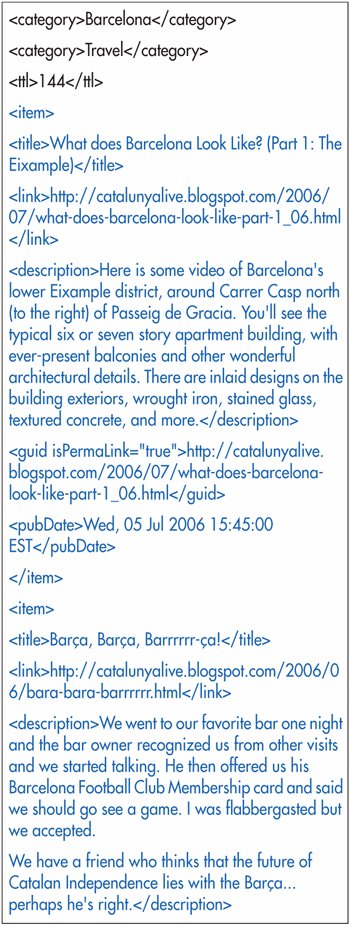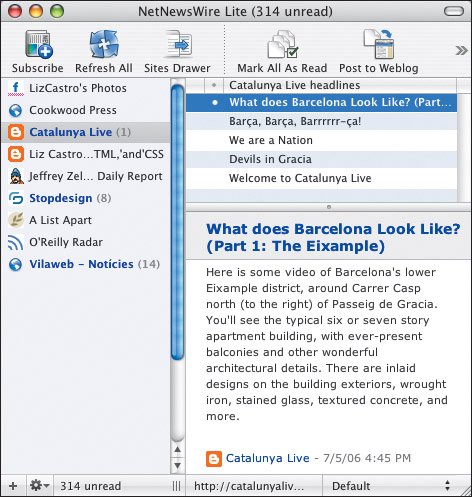Adding Items to a Feed
| The items are the individual articles that will show up in an aggregator. They can either be a teaser with a link to the full article, or they can include the entire story. Figure 25.6. The item elements describe the individual articles in your RSS feed. To add items to a feed:
|
EAN: 2147483647
Pages: 340


 Tips
Tips